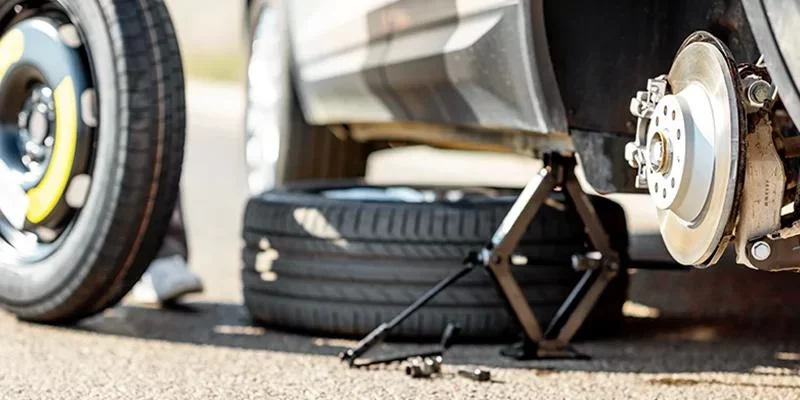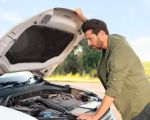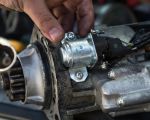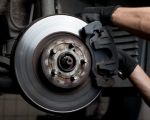Efficient Flat Tire Recovery: What You Need to Know About Roadside Assistance
It’s a situation no one wants to deal with – you’re driving along, and suddenly, the unmistakable thud of a flat tire interrupts your journey. Whether you’re on a busy highway, in a quiet rural area, or just a few miles from home, a flat tire can happen at the most inconvenient times. But fear not, because flat tire recovery doesn’t have to be a stressful experience. With a solid understanding of the typical roadside procedures, you can stay calm and efficiently handle the situation. Let me take you through the essential steps and strategies for dealing with flat tire emergencies when you're stuck on the side of the road.

MR. TIRE INC.
2078 New York Ave, Huntington Station, NY 11746, USA
1. Stay Calm and Assess the Situation
The first thing you should do when you realize you have a flat tire is to stay calm. I know, it’s easier said than done, especially if you’re in a rush or far from home, but keeping your cool will help you think clearly and make better decisions. Begin by assessing your surroundings. Are you on the side of a busy road? Is it safe to change the tire where you are, or do you need to move your vehicle to a safer spot? Look for a wide shoulder, parking lot, or any area away from traffic. Once you’re in a safe location, turn on your hazard lights to alert other drivers.

MR. TIRE INC.
2078 New York Ave, Huntington Station, NY 11746, USA
2. Gather Your Tools: What You’ll Need for Flat Tire Recovery
In a flat tire situation, having the right tools is crucial. If you're attempting a DIY repair, the essentials you’ll need include:
- A spare tire
- A car jack
- A lug wrench
- A tire pressure gauge
- Wheel chocks or blocks
- A tire inflator or repair kit (if available)
If you don’t have these items on hand, it’s important to get them before hitting the road. Some newer vehicles come equipped with a tire repair kit, which can temporarily seal small punctures, but for more severe damage, having a spare tire is your best option.
3. Contact Roadside Assistance or Towing Services
If you’re unable to change the tire yourself, it’s time to call for professional help. Most people today have access to a roadside assistance service, either through their car insurance, a third-party service like AAA, or even through car manufacturers. When you contact a towing or roadside assistance service, they’ll send someone to your location with the necessary tools and experience to either fix the flat tire or tow your car to a service station.
4. The Professional Approach: What Happens When Towing or Roadside Assistance Arrives?
When the roadside assistance team arrives, they’ll first evaluate the situation. If you're dealing with a simple flat tire, they will likely remove the damaged tire, inspect it for punctures or other issues, and install your spare. In some cases, if the damage is beyond the tire’s repair capabilities (for example, a large blowout or severe puncture), they may recommend a tow to the nearest auto shop. If you're unsure whether your spare tire is in good condition or have any other concerns, don't hesitate to ask the technician for their professional opinion.
5. Tire Repair or Replacement: What Should You Expect?
If you opt to repair the flat tire instead of replacing it, roadside assistance professionals can often patch small punctures. These repairs typically involve applying a rubber plug to the hole, which seals it temporarily. However, it’s important to note that tire patches are only a temporary solution. After getting a repair, you should head to a tire shop to have it inspected and professionally patched or replaced. If the damage is more severe, a full tire replacement may be necessary.
6. Special Considerations: When to Use a Tire Repair Kit
Many modern cars are equipped with tire repair kits, which often include tire sealant and an air compressor. If you have a slow puncture or small hole, a repair kit can be an effective temporary fix. Using the sealant, you can seal the hole in the tire and use the air compressor to reinflate the tire enough to get to a safe location or a nearby mechanic for a permanent repair. These kits are particularly useful if you're in an area where help is not readily available, but always remember that this is not a permanent solution and should be followed up with a professional repair.
7. When Towing Is Necessary: How to Handle the Tow Truck Process
There will be times when a tow is the best option, particularly if you have multiple flat tires, if the tire is too damaged for repair, or if you're in a situation where changing the tire is not feasible (e.g., in bad weather or on a busy highway). When the tow truck arrives, the technician will typically secure your vehicle to the truck and transport it to the nearest auto repair shop. Make sure to ask for an estimate of the cost before proceeding, as towing fees can vary depending on distance and other factors.
8. Roadside Assistance Safety: Protecting Yourself While Waiting for Help
While waiting for roadside assistance or a tow truck, safety should remain a top priority. If you’re on a busy highway, make sure to stay inside your car with your seatbelt on, especially if you’re in a location where traffic is fast-moving. If you must exit the vehicle, try to stay as far away from traffic as possible. Reflective vests, warning triangles, or flares can be very helpful to increase visibility and protect yourself in low-visibility conditions.
9. The Importance of Preventative Measures: Avoiding Future Flat Tires
Once you’ve dealt with your flat tire, it’s a good idea to take a moment to think about prevention. Regularly check the condition of your tires, including tread depth, pressure, and any signs of damage. Many tire shops offer free tire inspections, so it’s worth taking advantage of that service. Keeping your tires properly inflated can also help prevent blowouts, which are often caused by tires that are underinflated or overinflated.
Flat tire situations can happen to anyone, but knowing the typical procedures and understanding your options can make all the difference. Whether you're handling the situation yourself or calling for professional help, staying calm and prepared will help you get back on the road quickly. If you’re ever in need of towing services or roadside assistance, make sure to reach out to reliable professionals who can get you the help you need without further hassle.





























